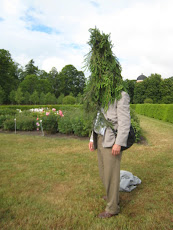A perspective on language, developed from a critical conceptual history point of view, might contribute to the efficiency in global, long term projects for knowledge management, and system development. New environments creates expressions, and sensibilities who paves the ground for the every day language of the future. The meaning of words and phrases evolves from situations of practical use. Aesthetics has various methods to coop with elusive phenomena, who will be important in future language use, or who creates historical differences in the understanding of expressions, and linguistic phrases.
The language of the future is born in contemporary life worlds. Aesthetics contributes here with a perspective, which brings us to the border of awareness. It is the place where we say to ourselves: ”This exists”, ”this is beautiful”, or ”this is unpleasant” Aesthetics in this sense is concerned with the possible and the utopian, not as contraries, but as traces left by processes where experiences emerges and are named in a multivalent praxis. In order to use language efficiently, as a tool for knowledge management, system development has to take into account several dimensions from the traditional domains of aesthetics.
Conceptual History: Most of the words we use in our daily life has been used several different ways throughout history. These more or less well known secondary meanings of words provides speech with a timbre of unveiled senses, which at the same time open up for variety in the use of a word. In effect we can adapt a word to a new situation. At the same time the multi-valence created this way brings up difficulties.
Hermeneutics: In practice we use our preconceptions to form an intuitive understanding of the meaning in an utterance. This might result in misunderstandings, but there are methods to help resolve misconceptions and create understanding when interpretations is necessary.
Praxis perspective: Essential for the understanding of language is the awareness of how contemporary speech is formed in tradition, real life situations, and living discussions characteristic of a culture. Knowledge, when it comes to the core, is practical and born in action, to use an expression from the contemporary debate about transmission of practical skills, and knowledge.
Conceptual modelling: This multilateral perspective on language makes the task of modelling a concept different, at the same time harder and more promising. Her me might find possibilities to create dynamic hybrids, and tools for adapting global verbal understanding to vernacular specifications when demanded.
Ontology development: A contemporary trend is the mapping of knowledge domains. When such endeavours are founded on well established language use they are called ontologies. The most promising way to create ontologies is to start from an analysis of established practice in large organisations. The International Councils of Museums ICOM in an independent project has created the CIDOC/CRM, a Conceptual Reference Model, or ontology, specially designed for cultural heritage and established as ISO-standard in 2006. The CIDOC/CRM is focus for a global project of harmonization , when it comes to terminological collaborations in the ALM-sector. Thus, an important forum for discussions around method, language and knowledge management in the cultural heritage sector is created, which might result in universal applications.
Aesthetic competence can focus several important dimensions of language. I have worked with methods and problems in this field in environments of pedagogics, research, and development. I have designed projects and worked in collaboration with system developers, artisans, artists, humanists and museum personal among others. All this has convinced me that I have something important to contribute in development project who takes language ans knowledge management seriously.
Subscribe to:
Post Comments (Atom)



No comments:
Post a Comment